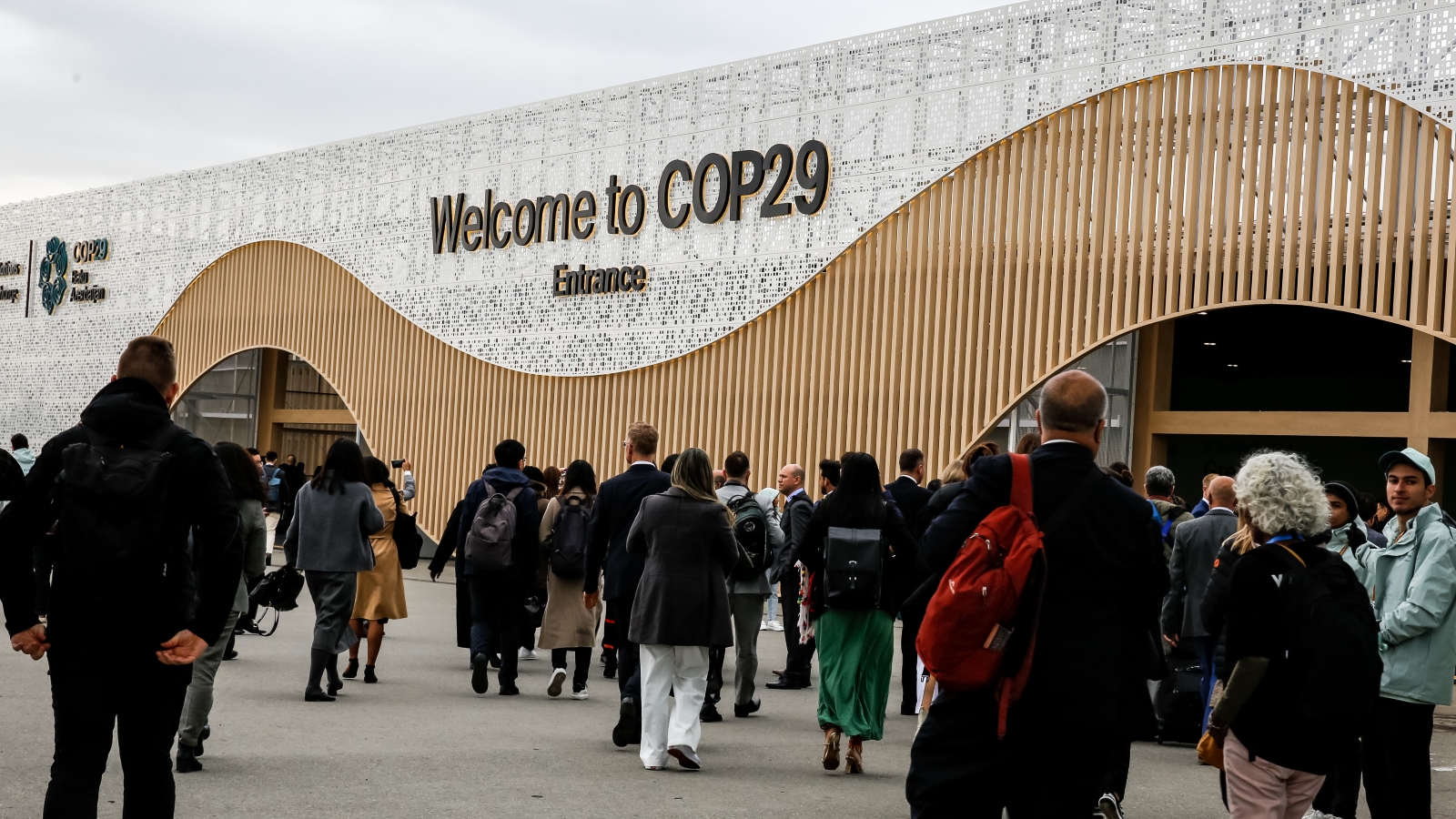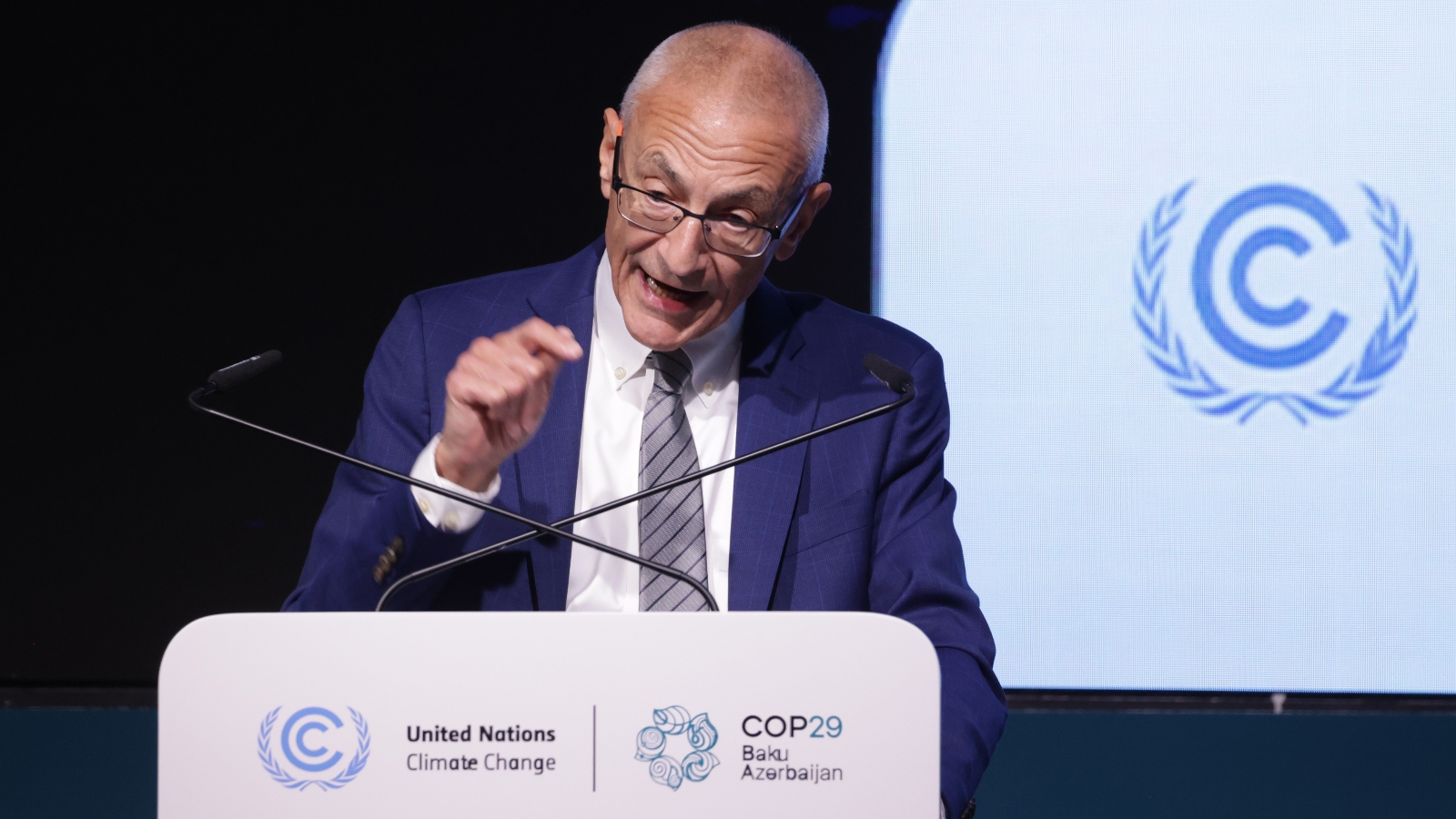
The world’s governments came to the United Nations climate summit in Baku, Azerbaijan, deadlocked over one ugly question. This has been debated for years, but now they have to get an answer in a matter of weeks; billions of dollars worth of international climate aid hangs in the balance. This money could mean the difference between life and death for some of the world’s poorest and most vulnerable people on the front lines of the climate crisis.
Everyone at the COP29 climate summit agrees that the world’s poorest and most climate-vulnerable countries need trillions of dollars to transition to clean energy and to face climate-driven disasters. And everyone agrees that rich countries, which are responsible for a disproportionate share of historical carbon pollution, have some responsibility to pay for this.
But the question no one seems to agree on is: Which countries are rich?
As financial needs balloon, longtime wealthy nations in North America and Europe clash with newer global power players such as China and Saudi Arabia over whether nations like the latter should be compelled to provide aid funding. The U.S. and European Union are pushing for a tough standard that would bind major emerging economies like China to donate, reflecting how much richer those countries have become in recent decades, but a broad coalition of developing countries is fighting to remove such language. to keep the agreement.
World leaders spent the first few days of COP29 delivering dozens of major speeches stressing the need for ambitious action and global cooperation. But now negotiators are plunging into tense, complex talks on the funding question, aiming to reach an agreement by the time COP29 concludes at the end of next week. As of Friday, they were still working through a sprawling 33-page document assembled by U.N. negotiating leaders, which contains a bevy of priorities from nearly every country in the world. Several countries’ representatives and advocates present at COP told Grist that these talks were the most difficult since those that led to the 2015 Paris Agreement, in which the world agreed to limit global warming to below 2 degrees Celsius.
“There is no dispute about the magnitude of the sums needed for the global community to switch,” says Ali Mohamed, the chief climate envoy for Kenya and chief negotiator for a large group of African countries. “I think the big challenge is trying to redefine the obligations,” he added, referring to efforts by developed countries such as the US to offload some of their financing burden on newly rich countries.
The battle lines were drawn more than three decades ago, in the 1992 agreement that first established COP as the forum for annual UN climate talks. That agreement divided the world’s countries into “developed country parties” and “developing country parties”. It stipulated that the former would “provide new and additional financial resources” to help poor countries decarbonize and also “assist … to cover costs of adaptation” to climate change. The “developed” group consisted of the richest few dozen countries in North America and Europe, as well as Japan and Australia, and the “developing” group consisted of almost the entire rest of the planet.
The world has changed a lot since then. China and India have become two of the world’s five largest economies and together account for nearly a third of the world’s population. East Asian countries like Singapore and South Korea have become pillars of the global technology and manufacturing sectors—and become phenomenally richer in the process. Persian Gulf countries like Saudi Arabia and the United Arab Emirates have used money from their massive oil fields to build some of the world’s most conspicuous infrastructure and buy global influence. As a result of all this change, only 13 of the world’s 20 largest economies were considered “developed” when the UN Convention first entered into force.
For established developed countries such as the United States and Canada, which are facing calls to commit to sending a trillion dollars a year to poor countries, the key question in Baku is how to bring new economies to the donor side of the table. bring. While many of the newcomers have already made voluntary contributions to international climate aid – China kicked off the conference by announcing that it has provided more than $20 billion in climate finance to developing countries since 2016 – largely resisting any official acknowledgment that they have a responsibility to contribute.
“You now have countries that are not part of the donor base, but that contribute and countries in the [Global South],” Steven Guilbeault, Canada’s environment minister, said in an interview with Grist. “But I think one of the issues is: What are the accountability mechanisms for that? What is the transparency?” (China’s announcement did not include a detailed outline of its commitments.)
In an addendum at the bottom of the most recent negotiating text, the Canadian and Swiss governments proposed a blunt solution to this problem: a hard numerical standard that would determine which countries should donate funds. There are two triggers that will make a country a required donor. The first is if the country is both among the top 10 annual emitters greenhouse gases and has a gross national income of more than about $22,000 per capita, adjusted for purchasing power differences across currencies. The second is if a nation has cumulative carbon emissions of more than 250 metric tons per capita and a gross national income of more than $40,000 per capita.
This sounds somewhat arbitrary until you look at which countries become donors under each of the proposed standards. Among the top 10 annual greenhouse gas emitterssix are not already considered “developed”. In descending order of per capita income, according to the World Bank, they are Saudi Arabia, South Korea, China, Iran, Indonesia and India. The income threshold in the Swiss-Canadian proposal would bump the first two of that list into the group of required donors. And while China is just below the income threshold, it could qualify as soon as next year. The last three countries, which are populated but less affluent, will be off the hook for the near future.
It catches the big fish. The second condition, which assesses income and emissions on a per capita basis, would lead to smaller developed countries with higher income levels, such as the United Arab Emirates, Singapore and Israel. (The Swiss delegation did not respond to questions about their proposal in time for publication.)
But negotiators from around the world oppose this proposal, and many say they oppose any efforts whatsoever to broaden the donor base. The Persian Gulf states in particular have slammed the formula as a betrayal of responsibility by the United States and Europe, which are the biggest emitters in historical terms – meaning their cumulative contributions to climate change are greater than even annual emissions figures indicate. The objectors also argue that these countries’ centuries-long head start on development, provided in part by their colonial history, should be a determining factor in who has to pay up.
In a statement during the last government dialogue on the goal, a few months before COP29, a representative for Saudi Arabia said that Arab states “reject” what it called “attempts to backtrack on our collective agreement.”
“The claim that changing economic realities necessitate an expansion of the donor base is unfounded,” the representative said at the time.
The Alliance of Small Island States, or AOSIS, an influential negotiating bloc representing several nations facing an existential risk from sea-level rise, such as the Marshall Islandsis also against the proposal. The group argues that such a change would jeopardize the original UN agreement to fight climate change, which called for legacy emitters to take the lead on climate finance.
“We really cannot entertain it,” said Michai Robertson, the bloc’s chief negotiator on financial issues. “It’s a thread you’re pulling, and it could unravel the whole fabric of the Paris Agreement. It’s an unequivocal no.” He said the text agreed to by all countries in Paris in 2015 already encourages developing countries to contribute financing if they can – and that countries such as China are already doing so.
There are also political considerations at play in the bloc’s opposition. In addition to vulnerable nations such as Fiji and the Marshall Islands, AOSIS also represents higher-income island states such as Singapore and the Bahamas. The latter are expected to become contributors under the new proposal, which evaluates national income and emissions on a per capita basis.
The other major point of controversy is China, whose per capita income is just on the threshold of the Swiss and Canadian proposals. One version of the Swiss-Canadian proposal sets the income cut-off at $20,000 per capita, which would include China, but another version puts it at $22,000, which would exclude China for at least a few years – an indication of how delicate can be the issue of the country’s inclusion.
On the opening day of COP29, negotiators expressed strongly different positions on the China issue. Teresa Anderson, a climate advocate at the global anti-poverty organization ActionAid, said: “There is no measure by which China has a historical obligation,” calling it “geopolitical whataboutery” and “finger-pointing.” A few hours later, Germany’s chief climate negotiator, Jennifer Morgan, pointed out that China’s historical carbon emissions are now equal to those of the European Union.
The stark contrast in statements was proof that, even after years of negotiating the financial goal, the opposing sides of the debate have made almost no movement towards each other. The stalemate continued during the first days of the conference, as developing countries rejected an early draft of the goal text, and UN watchdogs released a massive new draft with a grab bag of priorities. Despite developing countries’ objections, the Swiss-Canadian proposal is still there, lurking at the bottom of the draft.
Sandra Guzmán Luna, a former climate negotiator for the government of Mexico and the director of GFLAC, an organization that helps Latin American and Caribbean countries advocate for more climate money, said the road ahead is steep.
“It’s going to be very, very challenging because there hasn’t been a lot of movement,” she said.





